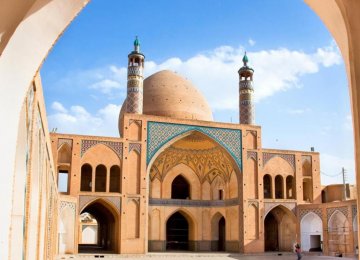A study says two main factors have drastically affected Iranian tourism marketing in the past four decades. As reported by the Persian daily Donya-e-Eqtesad, researchers Meisam Mousaei, professor at the University of Tehran, and Seyyed Masoud Mirtalebi, a graduate student at the university, analyzed the tourism marketing strategies, including objectives and budgets, throughout the years and came to the conclusion that persistent lack of funds and professional marketing have rendered effective promotion of the vast tourist attractions all but impossible.
They poured over the five-year economic, social and cultural development plans and found that tourism was never a main development goal, as evidenced by the almost invisible reference to this key sector in the five plans since the 1979 revolution.
According to the two men, no single entity was permanently delegated the task of tourism development, which is one of the fastest growing industries in the world and employs more people than the auto and chemical industries combined.
Since the revolution, “various ministries and organizations have been given the reins of tourism, which indeed prevented the formation of practical and workable development strategies,” the authors write in their paper.
Not a Priority
The fact that tourism was hardly ever a priority of the governments in Tehran does not pass for news anymore, despite protests by former officials. The authors opine that the amount of funds allocated to a sector by the government “is a solid indicator of the place and priority of the industry.”
In their research, Mousaei and Mirtalebi show that, aside from the years 2001 and 2002, tourism never had a budget of its own. Furthermore, lack of cooperation with the private sector and ambiguity surrounding areas of cooperation between the two are pointed to as evidence of mismanagement and lackluster planning.
The authors say that the government is supposed to identify target markets and support—but not control—the private sector’s move to promote Iranian tourism in those (overseas) markets. In markets where the private sector, for whatever reason, is not interested, the government should then take it upon itself to do the job.
“The fact that both the government and private companies separately participate in the same international exhibitions should be an indicator of their level lack of cooperation,” the authors say.
Earlier this year Iran’s Cultural Heritage, Handicrafts and Tourism Organization announced that measures have been taken to help bring the public and private sectors closer to enhance cooperation, so there may be hope yet.
Lack of Strategy
According to the study, lack of strategy and clear objectives “is the biggest problem” facing tourism marketing. The authors say that “none of Iran’s past tourism objectives were based on firm and extensive studies, and marketing attempts rarely, if ever, followed effective strategies.
They single out the lack of statistical knowledge—due to poor, and at times contradicting, data —as the main reason undermining tourism plans and the future course of action.
To demonstrate the dire state of data collection, they cite World Tourism Organization data and note that Iran has not submitted inbound tourism figures to the organization since 2004, and worse, it has failed to disclose where the foreign tourists come from since 1995.
The researchers, however, concur that since the election of President Hassan Rouhani in 2013, the industry is slowly being steered in the right direction, but reiterate that many of the problems which plagued the sector in the past, such as lack of reliable data and worthwhile research, have yet to be addressed.
“Now that the sixth economic development plan [2016-21] is being written, it’s time that officials learn from mistakes”, look to the past and prepare for a better future, the study said.





